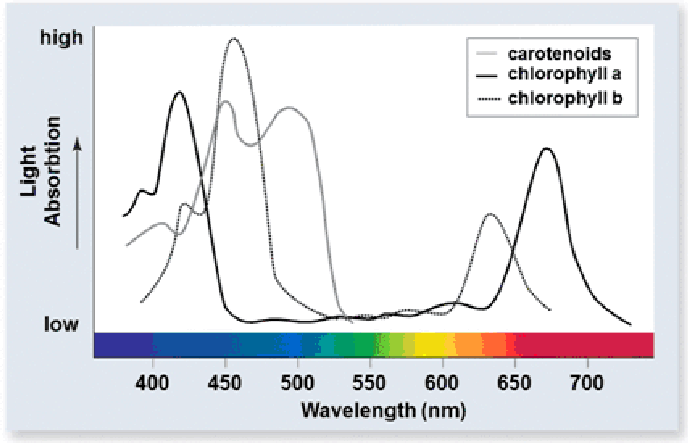The ATP that is produced in the light reactions is used by the cell to
A. reproduce and grow.
B. build carbohydrate molecules.
C. move electrons through the electron transport chain.
D. split water into H+ and O2.
Answer: B. build carbohydrate molecules.
You might also like to view...
Based on a variety of experiments, it is known that the rate of photosynthesis is highest when wavelengths of light between 400 and 500 nm are used, and when wavelengths around 700 nm are used. What does this indicate about the relative importance of chlorophyll a and b in photosynthesis?

A. Reflection of light by chlorophyll a and b is essential for the process of photosynthesis
B. Absorption of light by chlorophyll a and b is essential for the process of photosynthesis
C. Transmission of light by chlorophyll a and b is essential for the process of photosynthesis
D. Chlorophyll a and b are much less important than other pigments in the reflection, absorption and transmission of light relevant to photosynthesis
Clarify Question
What is the key concept addressed by the question?
What type of thinking is required?
Gather Content
What do you already know about the role of pigments during photosynthesis? What other information is related to the question?
Choose Answer
Do you have all the information needed to analyze the graph and answer the question?
Reflect on Process
Did your problem-solving process lead you to the correct answer? If not, where did the process break down or lead you astray? How can you revise your approach to produce a more desirable result?
All genotypes are equally susceptible to the effects of a high-fat diet
A. true B. false
During which phase of the bacterial growth curve does a bacterial population become much more resistant to harmful conditions?
A. Lag phase B. Exponential phase C. Stationary phase D. Late log phase
Which of the following is NOT true concerning
botulism? a. It is a type of food poisoning. b. The toxin is odorless and tasteless. c. The pathogen is a virus. d. The toxin enters motor neurons. e. Muscles become paralyzed.